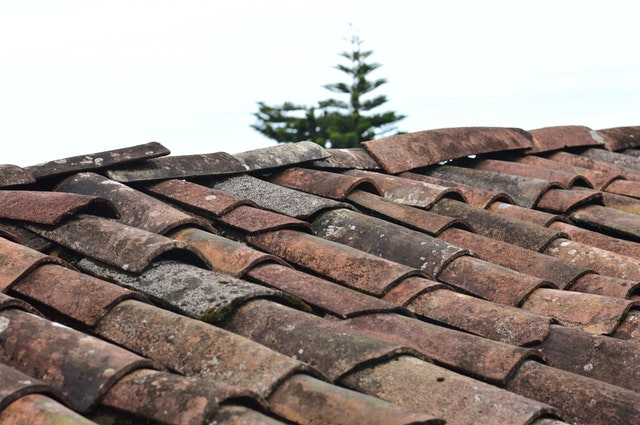
Whenever people describe having a safe and secure place to live, they talk about having a solid roof over their heads. This idea takes on a whole new dimension when you’re building a home, or undertaking a renovation. You want to make sure that the literal roof over your head will remain solid for many years to come.
There’s no shortage of options, but many people still choose to go with tile roofing. This approach certainly isn’t new; its origins date back more than 5000 years to China and Mesopotamia. The fact that we are still using this approach speaks volumes as to its benefits. Not only is it durable it can also add a touch of classical decoration to the outside of your home.
But just how long does a tile roof last? You want to get the most out of your investment, so is this something that you’re going to be replacing every few years? Let’s take a closer look at the issue.
The Short Answer
While there are tiles that have been unearthed relatively intact that date from around the 7th century B.C., that doesn’t mean they’ll stay on top of your home for thousands of years. In general, though, a well-installed set of roof tiles could last anywhere from 50 to 100 years. Which, you’ll probably agree, is a pretty good return on investment.
However, as with all such things, there’s a little more that goes into ensuring roof tiles last a long time.
The Key to Durability
One of the main reasons that a tile roof tends to have a reputation for longevity, is that they are more durable than other components. But when you’re selecting a material for your construction roofing project, you naturally want to have more information about how and why this is. After all, this could represent a significant investment for your property.
Generally, durability in tiled roofing comes down to a few different areas, including:
Weather
Let’s face it, Texas is particularly susceptible to some extreme weather conditions. As such, your choice of roofing has to be well designed to withstand the worst of what nature has to offer. Clay and concrete tiles are considered to be among the most weatherproof options available to homeowners. This is largely because during manufacturing the tiles are fired at high temperatures to make the material stronger. This, alongside a lower water content and the occasional inclusion of glazes or industrial coating, contributes to a particularly hardy tile that is effective against winds, freezing temperatures, and hailstones. Indeed, the strength and construction of the material even makes it resistant to hurricane-force winds. Studies have shown that gusts of at least 125mph can be held at bay by clay and concrete tiles.
Fire
In the majority of cases, tile roofing is a fire-resistant material. Concrete, clay, and slate are among the most common materials used for roof tiles, and each of these are largely impervious to being damaged as a result of heat and fire. It’s also worth noting that neither of these tiling options catches fire. This non-combustible property contributes to them being considered Class A fireproofing materials, which is especially important if you live in areas that are at risk from wildfire. When fitted by a professional, this type of roofing can help to boost the protection of your home.
Rot
How long does a tile roof last, given that it is the most exposed aspect of your home to the elements? The moisture from rain and humidity can lead to rot on other materials — particularly on flat roofs. However, tiles are more innately resistant to rot. The concrete, clay, and slate that are used to create tiles don’t tend to harbor the fungi and mold that are common on more natural roofing materials and avoids allowing fungus to eat through other wooden components. When fitted by professionals that understand the importance of correct positioning and ventilation, a tiled roof can help the top of your home — including attic spaces — withstand rot.
What Are the Risks?
When choosing a roofing material that will last a long time, it’s vital to know the risks involved. Any professional that tells you that any one material is entirely risk-free should be treated with a little caution; they’re trying to sell you something rather than factor in your needs and wellbeing. Tile roofs are certainly among those with the most longevity, but they’re not perfect.
Some issues that you could face during the lifetime of your roof can include:
Breakages
It might seem contradictory, but the material that has been tested to withstand hurricane-force winds can be quite brittle. This means that anything falling on them, or if someone is undertaking some work on your home and walks across them incorrectly, a breakage can easily occur. This isn’t just an issue from the perspective of having to replace broken tiles. If cracks occur they can let in rain, moisture, and molds that could lead to you needing a roof repair. Therefore a certain amount of vigilance is needed to prevent serious issues.
Falling
If you have an expert install your roofing tiles, it is extremely unlikely that you’ll find them falling very often. That doesn’t mean it can’t happen, though. Falling roof tiles can be caused by people — such as satellite dish installers or gutter cleaners — walking around on the roof without care. It may also occur due to poor workmanship. It may even be because the gradient of your roof is not suitable for tiles. If your roof has a pitch below 4:12, chances are it isn’t going to hold tiles especially well.
Tips to Boost Longevity
Tiles are, for the most part, manufactured to last decades. However, as with any element of your home, they’ll usually last longer if you take care of them. As such, some ongoing maintenance is both necessary and recommended.
- Inspect it Regularly
Don’t go walking around up there unless you absolutely have to, but take time to look out for any loose, cracked, or missing tiles every couple of months and after extreme weather. Every couple of years, hire a professional to undertake a thorough inspection of the roof area to identify any current or potential problems. This inspection should include a review of the flashing details in order to ascertain their continued integrity.
- Keep it Clean
If you have tile flooring, you’ll notice some similarities here. You may not be able to use the same tools, like mops, for example, but you’ll generally be able to use the same mixture if you’re going to clean the tiles yourself.
While tiles are usually less likely to harbor molds, there is still an opportunity for moss and algae to grow, and pests to breed. This generally doesn’t cause structural damage, but it can certainly become unsightly and cause your tiles to look dull. Alongside other outdoor materials like canvas canopies and thatch umbrellas, they need maintenance. It is therefore important for your tiles to undergo professional cleaning a couple of times a year to keep them free of algae and moss.
Wrapping Up
How long a tile roof lasts really depends a lot on the circumstances. When installed by an experienced professional, and maintained regularly, you could be looking at a roof that lasts upwards of 50 years. Yes, there can be issues that reduce this, but these are largely avoidable with some care and attention. Take the time to talk to professionals about whether your building is suitable for installation, and seek their ongoing advice on how to keep your tile roof effective in the long term.





